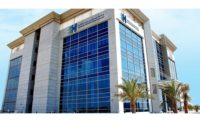In the summer of 2016, UBER Advanced Technologies Group (ATG) officially opened its doors in downtown Pittsburgh. As the main campus for UBER’s autonomous vehicle research and development labs, the building presented a unique design challenge.
Vehicle testing garages sit side by side with conference rooms and office space. This drove the need for zone control and specialized ventilation. After the engineer consulted with the local Mitsubishi Electric distributor, Comfort Supply Inc., a comprehensive solution was designed.
“We house all the software engineers and techs who build the data and software for our autonomous cars,” explained TJ Wolkiewicz, facilities lead at UBER ATG. “When we took over this building — originally a 110,000-square-foot warehouse — we needed the space to work for us.”
After planning for a second floor, the project and facilities team knew the layout required advanced HVAC technology.
“We had several different parts going into this building: a garage, special research areas, office spaces, gathering areas, a café, and so on,” said Aaron Doubt, facilities and special projects director for UBER ATG. “We had to have a system that gave us precise control over each zone. With a traditional, forced-air HVAC system you have mass conditioning. We could have never provided a comfortable atmosphere for our occupants with a centralized system.”
Knowing VRF had the zoning capabilities required, the company turned to Mitsubishi.
“Mitsubishi Electric had everything the building engineer was looking for,” noted Justin Kern, senior commercial sales engineer at Comfort Supply. “They were able to provide a single-source contact for the VRF system, ventilation equipment, and building controls. It’s not often you can have one company responsible for all three. It makes for a better overall project whenever that happens.”
Combining their experience, the engineer and Comfort Supply worked directly with Mitsubishi Electric’s Controls Solutions Team to layout and design a cohesive system. A feature of controls solutions, building automation is paired with customer service from initial design to post-installation and follow-up support. Kern described controls solutions as a huge benefit, particularly for the planning stages of any project.
“Mitsubishi Electric was involved right from the construction phase, even coming out on-site several times,” said Kern. “Controls solutions helped us communicate to the HVAC contractor exactly what needed to occur during the install since we don’t have a controls background. Sometimes when I’m on a project, there are minor startup issues when we’re dealing with a third-party controls company. Controls solutions thoroughly understands how to control and operate VRF. ”
In addition to the VRF system, the team specified four PremiSys Fusion DOAS units for ventilation as well as third-party electric heaters and exhaust fans throughout the building. All control systems were integrated into Mitsubishi Electric’s BMS Diamond Controls.
“For a building like this, facility managers often have to deal with several manufacturers in addition to different controls programs — one for the cooling and heating system, one for the ventilation equipment, etc.,” explained Tom Greco, senior manager, controls solutions business development, Mitsubishi Electric Trane HVAC US LLC. “Diamond Controls are capable of full building automation right out of the box, even for third-party equipment. This controls package allows UBER to monitor and regulate the whole building efficiently.”
Within the testing garages, Diamond Controls is also a major component of ventilation safety for employees.
“In our R&D showroom, we pull in cars for research and testing,” noted Wolkiewicz. “Monitoring car exhaust and fumes is a priority. In addition to our DOAS systems, Mitsubishi Electric was able to integrate CO2 sensors into the controls interface. I can just put the system on ‘auto mode,’ and it will alert us as well as our Pittsburgh Security Operations Center if it senses any kind of gas in the air. It’s so nice that we can see everything right from one dashboard.”
Diamond Controls features a full graphical interface and streamlines scheduling and HVAC management by zone, in-person or remotely — an advantage for UBER ATG’s facilities team.
“The best part of the interface is that we have remote access from anywhere,” said Wolkiewicz. “This job requires that we travel to our different job sites, and we’re able to access the controls right from our laptops. If anyone asks us about cooling or heating, we can easily adjust that on the go.”
Beyond the research and design facilities, the campus also has large office spaces and is a prime location for hosting meetings and events.
“Having the ability to control each room with its own set point or even a small section of rooms with VRF has been great,” Doubt added. “It really makes it easy to not have those big temperature deviations or fluctuations that you would have with a traditional system. Not to mention the ease of having branch controller boxes in each zone that tie into the BMS — that has really helped us in our day-to-day operations.”



